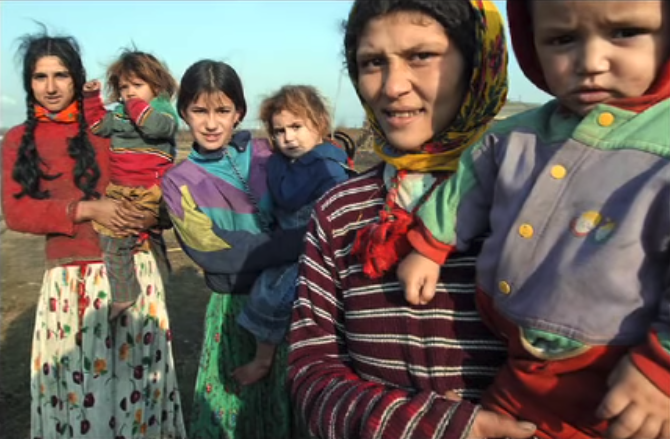Introduction
The term ‘Roma’ encompasses many different national groups. It is impossible to overstate the diversity of the Roma communities in Central and Eastern Europe (and elsewhere).
Within these, there are subgroups which may have familial, geographical or territorial associations: Vlax Rom, Rumungro Rom, Kalderash, Sinti, Lovari, Manouche, Tattare, Kaale, Cale, Ursari, Luri and many more.
For this resource, the term Roma also includes persons describing themselves as Travellers, Manouches, and Sinti, among others.
Historical Distribution of the Romani People:
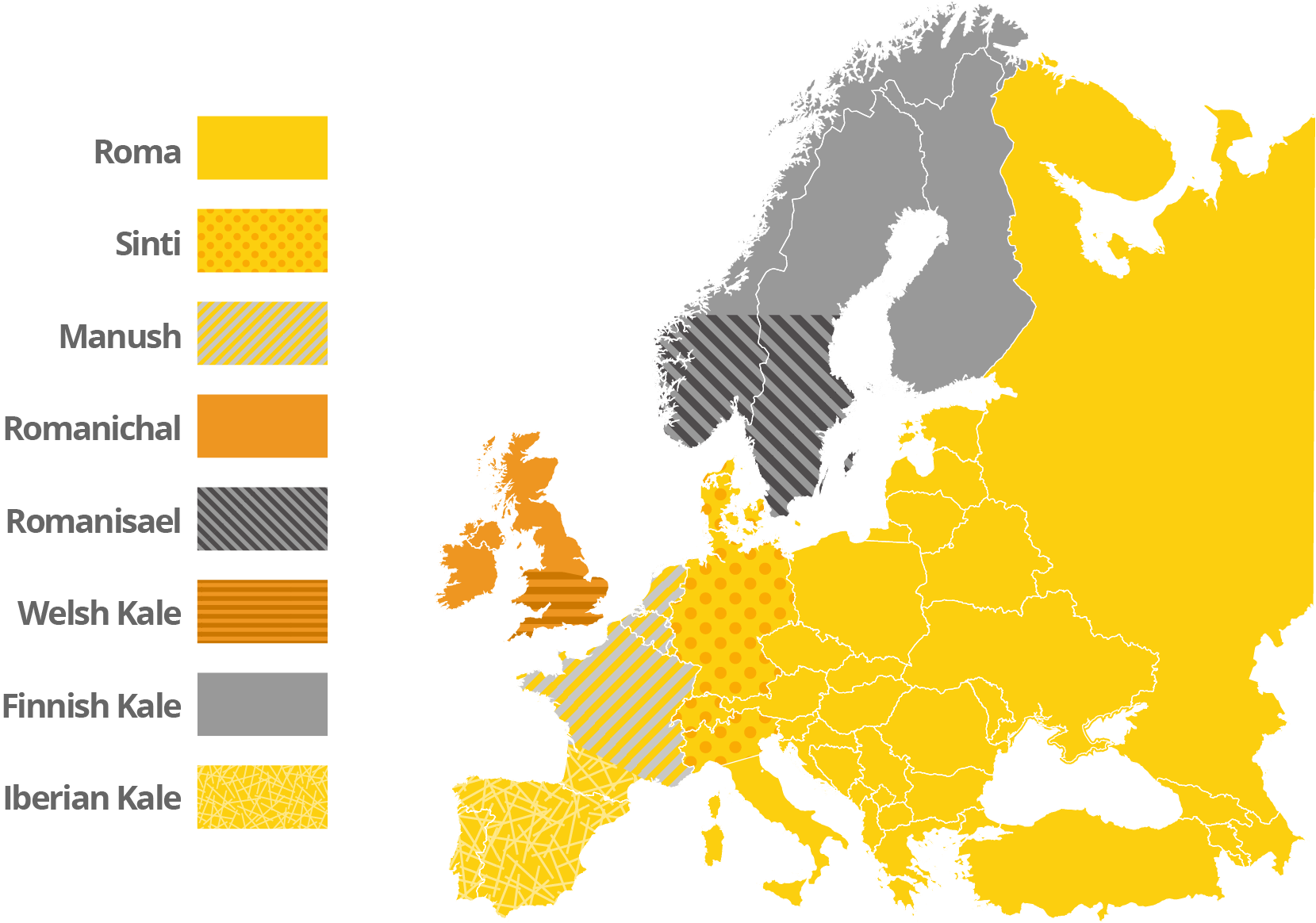
Who are the Roma?
The first Roma from Central and Eastern Europe came to the UK in the 1990s seeking asylum to escape widespread racism and discrimination.
Since the EU enlargements in 2004 and 2007, they have been able to exercise their right to free movement as EU citizens. Although it is not known exactly how many Roma live in the UK, the best estimate is around 500,000, of which approximately 65% are children of school age.
Roma from Central and Eastern Europe are from the same broad ethnic group as English Gypsies, and suffer similar discrimination to Irish Travellers.
However Roma face issues that are similar to other ethnic groups who recently migrated to the UK, in addition to those commonly experienced by Gypsies and Travellers.
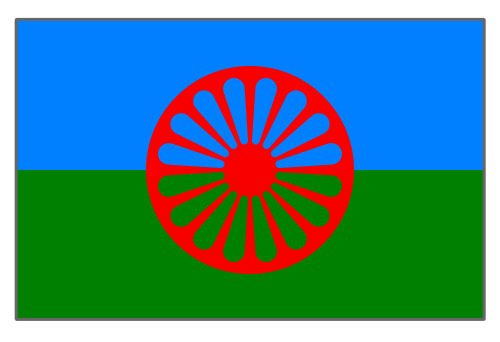
Flag of the Romani people, created in 1933 and accepted by the 1971 World Romani Congress
Who Are The Roma? Click on the image below to watch the short video about the Roma from The National Democratic Institute (opens in a new browser window).
Impact of social exclusion on health
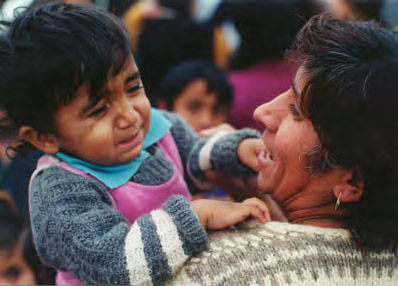 The accumulation of social exclusion, featuring inaccessible healthcare, poor housing and restricted education is seen all too clearly in the health statistics of the Roma community.
The accumulation of social exclusion, featuring inaccessible healthcare, poor housing and restricted education is seen all too clearly in the health statistics of the Roma community.
- Life expectancy for Roma populations in Eastern Europe is about 10 years less than the overall population.
- Infant mortality rates are twice as high among the Roma than the non-Roma in the Czech Republic, Slovakia, and Hungary.
- Studies show higher rates of type two diabetes, coronary artery disease, and obesity in Roma adults, and vitamin deficiencies, malnutrition, anaemia, dystrophy, and rickets among children.
- Fifty-one percent of Roma women aged 16–50 in settlements near Belgrade, Serbia, were found to be undernourished. Almost all women in Roma settlements around Belgrade smoke tobacco, many beginning at age 11 or 12.
- It is widely agreed that TB, HIV/AIDS, and viral hepatitis disproportionately affect minority populations in Eastern and Central Europe.
- In a Serbian Roma community, the TB prevalence rate was found to be more than 2.5 times the national average.
It is important to appreciate the following:
A sizeable proportion of Roma adults have had very little or no education and their access to health education, services and diagnostics has been severely limited due to high levels of discrimination: few were registered with doctors in their countries of origin.
Bear in mind that a Roma adult may well be unknowingly suffering from a chronic condition, for example, TB, Hepatitis, HIV/AIDS and other serious illnesses. For a useful TB awareness animation, see the resource section.
Distribution of Roma communities in the UK
The various national groups of Roma have established significant communities throughout the UK, particularly in the north of England, the Midlands, Kent, north and east London, Glasgow, Cardiff/Newport and Belfast.
The main Roma nationality groups are from:
Among the most sizeable communities are Czech, Hungarian, Romanian, Polish and Slovak Roma. The map in the next section denotes the settlement of different Roma nationality groups in the UK.
This is important because of the different categories people fall under according to their country of origin. Experiences of life in the UK and access to services differ according to whether Roma migrants come from A8 or A2 countries.
A8 countries: Poland, Czech Republic, Slovakia, Hungary, Estonia, Latvia, Lithuania, Slovenia
A2 countries: Bulgaria and Romania
Nationalities of Roma communities in the UK
Nationalities of Roma communities living in different parts of the UK:
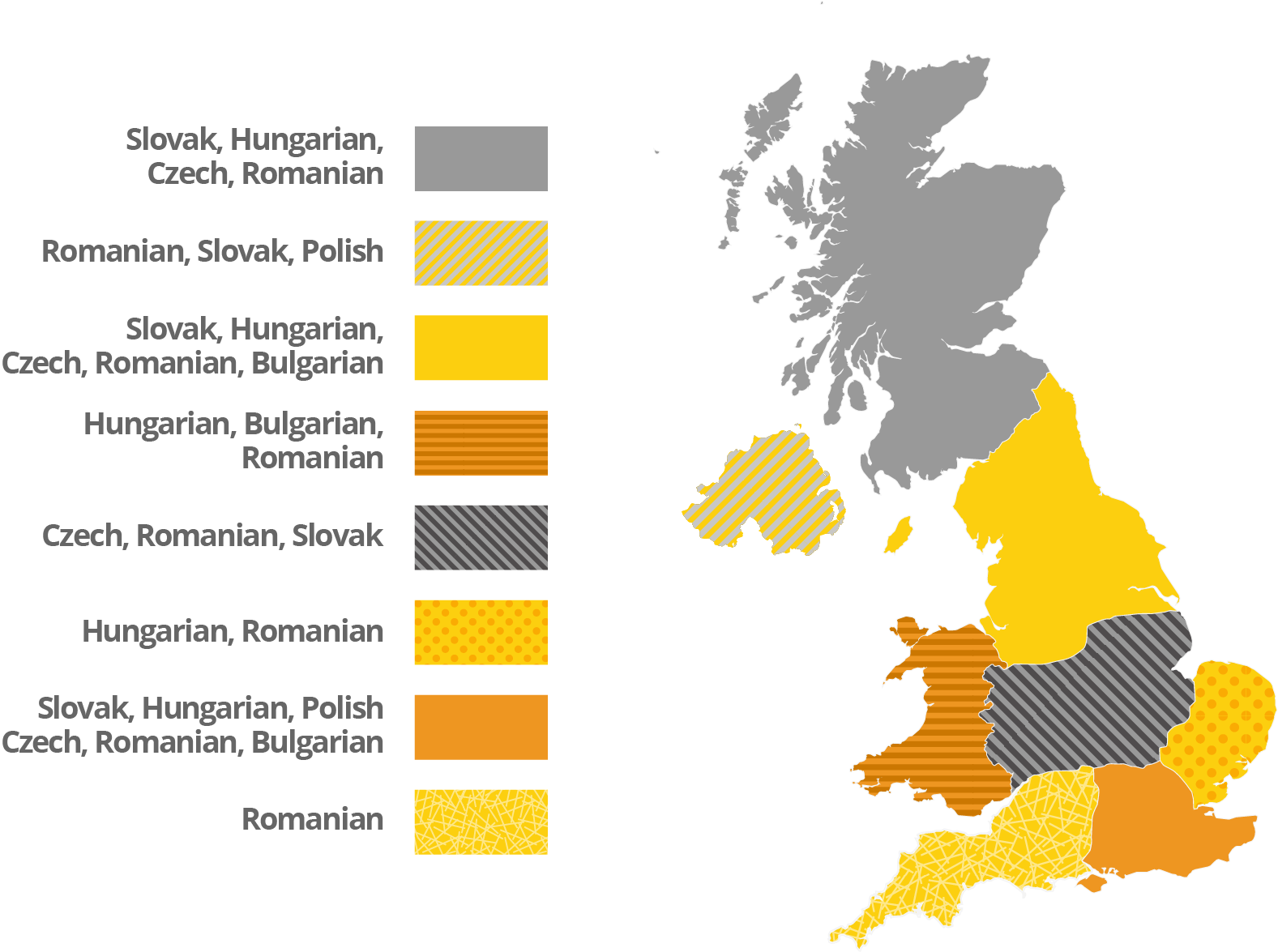
So, once in the UK, is the situation improved?
Research by Equality into the Roma living in the UK (2009) found:
- A number of local authorities felt that Roma in their area were socially isolated.
- Overcrowding is a very serious issue, especially in poorer households of Romanian and some eastern Slovak Roma.
- The average number of people living in a household was 6.
Broken down by nationalities:
- on average, 10 people lived in Romanian and Bulgarian Roma (A2) households,
- an average of 4 people per household in the Czech, Slovak, Polish and Hungarian Roma (A8) homes
- Romanian Roma are particularly at risk: 27 people were sharing accommodation in one house; others reported 17, 16, 14 and 13 people per household respectively.
- Such overcrowding can have implications for health, with raised incidence of conditions such as respiratory problems, childhood TB, and meningitis.
Module 8 Unit 1 questions
Read through the statements below and select True or False for each one.
Q1. The majority of Roma participating in the survey reported that they and their children were registered with a local GP.
TRUE
FALSE
Q2. The vast majority of Roma were generally happy with healthcare in England, mainly because they had not been subjected to discriminatory treatment on the grounds of their ethnicity.
TRUE
FALSE
Q3. Roma are used to having one GP only, unlike in England where they may see different GPs in a practice.
TRUE
FALSE
Q4. Roma people frequently return to their countries of origin for treatments such as gynaecology, cancer treatment and hospital care.
TRUE
FALSE
Q5. Some Roma had been declined healthcare provision in their countries of origin, which, according to them, had never happened to them in England.
TRUE
FALSE
Q6. Mothers with newborn babies and/or who had the experience of giving birth in their countries of origin and in England were much happier with the medical staff’s approach to them in England than in their home country where the staff would treat them as “gypsies only”.
TRUE
FALSE
Further study
The research findings concluded that although Roma generally perceived healthcare in the UK to be good, they still returned home for certain types of treatment, despite the discrimination faced, apparently due to a combination of quality of care, language barriers and waiting times.
So what are the implications for your service? Make a note of three facts you have learned in this unit which may have a bearing on the work you do to engage the Roma community.

